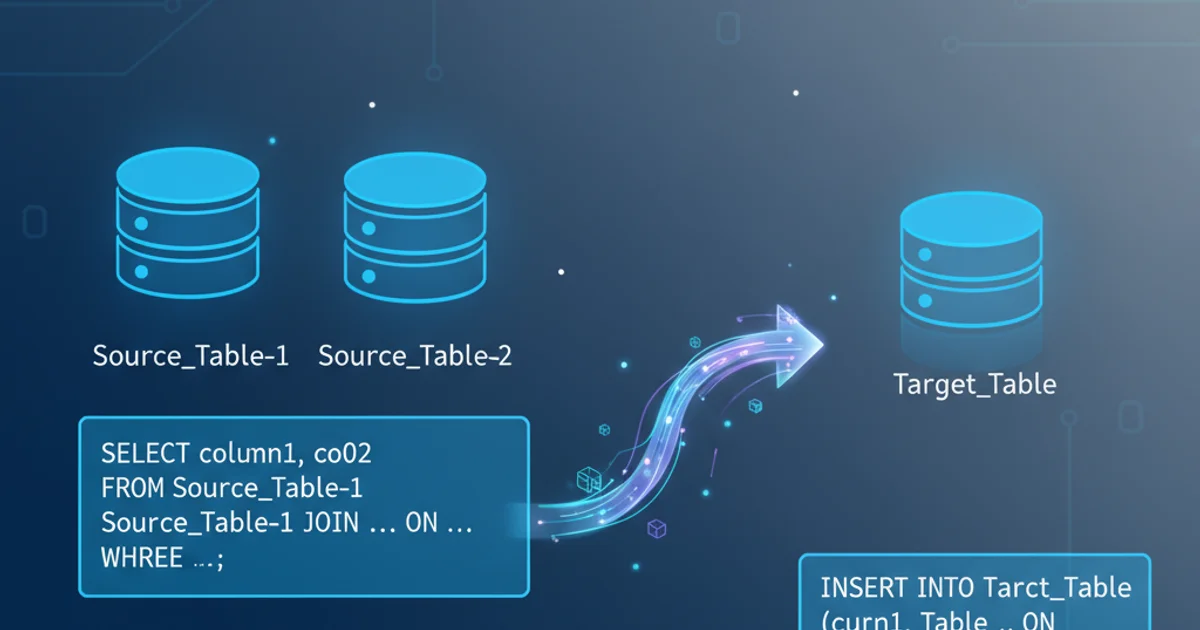How can I tell if I'm running in 64-bit JVM or 32-bit JVM (from within a program)?
Categories:
Detecting JVM Architecture: 32-bit vs. 64-bit from Within Java

Learn how to programmatically determine if your Java Virtual Machine (JVM) is running in 32-bit or 64-bit mode, a crucial detail for native library compatibility and performance tuning.
Understanding the architecture of the Java Virtual Machine (JVM) your application is running on is often critical, especially when dealing with Java Native Interface (JNI) libraries, memory management, or performance optimizations. A 32-bit JVM can typically address up to 4GB of memory, while a 64-bit JVM can address significantly more, making the distinction important for resource-intensive applications. This article explores various methods to programmatically detect the JVM's bitness from within a Java application.
Why JVM Bitness Matters
The primary reasons to determine JVM bitness revolve around compatibility and resource utilization:
- JNI Libraries: If your Java application interacts with native code (e.g., C/C++ libraries) via JNI, the native libraries must match the JVM's architecture. A 64-bit JVM cannot load 32-bit native libraries, and vice-versa.
- Memory Management: 64-bit JVMs can utilize more heap memory than 32-bit JVMs, which are typically limited to 4GB (or less, depending on the operating system). For applications requiring large amounts of memory, a 64-bit JVM is essential.
- Performance: While 64-bit JVMs can access more memory, they also consume slightly more memory per object due to larger pointer sizes. This can sometimes lead to a marginal performance difference, though modern JVMs are highly optimized.
- Operating System Compatibility: The JVM architecture must match the underlying operating system architecture for optimal performance and stability, although a 32-bit JVM can run on a 64-bit OS.
flowchart TD
A[Java Application] --> B{Needs JVM Bitness?}
B -->|Yes| C[Check 'os.arch' System Property]
C --> D{Contains '64'?}
D -->|Yes| E[64-bit JVM]
D -->|No| F[32-bit JVM]
B -->|No| G[Continue Application Logic]Decision flow for determining JVM bitness
Method 1: Using the os.arch System Property
The most common and reliable way to determine the JVM's bitness is by inspecting the os.arch system property. This property typically reflects the architecture of the operating system and, by extension, the JVM running on it. While not explicitly stating '32-bit' or '64-bit', its value often contains indicators like amd64, x86_64, or ppc64 for 64-bit systems, and x86, i386, or i686 for 32-bit systems.
public class JvmBitnessDetector {
public static void main(String[] args) {
String osArch = System.getProperty("os.arch");
System.out.println("os.arch: " + osArch);
if (osArch.contains("64")) {
System.out.println("Running on a 64-bit JVM.");
} else {
System.out.println("Running on a 32-bit JVM.");
}
}
}
Detecting JVM bitness using the os.arch system property.
os.arch is generally reliable, it's important to note that a 32-bit JVM can run on a 64-bit operating system. This method primarily indicates the architecture of the JVM itself, which usually aligns with the OS architecture unless a specific 32-bit JVM was installed on a 64-bit OS.Method 2: Checking the sun.arch.data.model System Property
For Oracle/OpenJDK JVMs, another useful system property is sun.arch.data.model. This property directly indicates the data model of the JVM, returning 32 for 32-bit JVMs and 64 for 64-bit JVMs. This is often considered more direct than parsing os.arch.
public class JvmBitnessDetectorAdvanced {
public static void main(String[] args) {
String dataModel = System.getProperty("sun.arch.data.model");
System.out.println("sun.arch.data.model: " + dataModel);
if (dataModel != null && dataModel.equals("64")) {
System.out.println("Running on a 64-bit JVM.");
} else if (dataModel != null && dataModel.equals("32")) {
System.out.println("Running on a 32-bit JVM.");
} else {
System.out.println("Could not determine JVM bitness using sun.arch.data.model.");
}
}
}
Using sun.arch.data.model for direct bitness detection.
sun.arch.data.model property is specific to Oracle/OpenJDK JVMs and is not part of the standard Java API. Relying on it might lead to issues with other JVM implementations (e.g., IBM J9, Azul Zulu) where this property might not exist or have a different meaning. For maximum portability, os.arch is generally preferred, although it requires more robust parsing.Method 3: Inspecting Pointer Size (Advanced/JNI)
A more fundamental approach, especially relevant for JNI development, involves determining the size of a pointer. In a 32-bit system, pointers are 4 bytes (32 bits), while in a 64-bit system, they are 8 bytes (64 bits). While Java doesn't expose pointer sizes directly, this concept underpins the sun.arch.data.model property. For most practical Java applications, the system properties are sufficient. If you are deeply involved in JNI, you would typically compile your native libraries for the target architecture, and the JVM would then attempt to load the appropriate version.
System.getProperty("os.arch") or System.getProperty("sun.arch.data.model") is sufficient and recommended. Avoid complex JNI-based solutions unless absolutely necessary for specific native integration scenarios.Putting it Together: A Robust Utility Method
For a more robust solution, you can combine these checks into a utility method that prioritizes the more direct sun.arch.data.model but falls back to os.arch for broader compatibility.
public class JvmArchitectureUtil {
public enum JvmBitness {
BIT_32, BIT_64, UNKNOWN
}
public static JvmBitness getJvmBitness() {
// Try sun.arch.data.model first (more direct for Oracle/OpenJDK)
String dataModel = System.getProperty("sun.arch.data.model");
if (dataModel != null) {
if (dataModel.equals("64")) {
return JvmBitness.BIT_64;
} else if (dataModel.equals("32")) {
return JvmBitness.BIT_32;
}
}
// Fallback to os.arch (more portable)
String osArch = System.getProperty("os.arch");
if (osArch != null) {
if (osArch.contains("64")) {
return JvmBitness.BIT_64;
} else if (osArch.contains("86") || osArch.contains("i386") || osArch.contains("i686")) {
return JvmBitness.BIT_32;
}
}
return JvmBitness.UNKNOWN;
}
public static void main(String[] args) {
JvmBitness bitness = getJvmBitness();
System.out.println("Detected JVM Bitness: " + bitness);
if (bitness == JvmBitness.BIT_64) {
System.out.println("This JVM is running in 64-bit mode.");
} else if (bitness == JvmBitness.BIT_32) {
System.out.println("This JVM is running in 32-bit mode.");
} else {
System.out.println("Could not reliably determine JVM bitness.");
}
}
}
A utility method for robust JVM bitness detection.